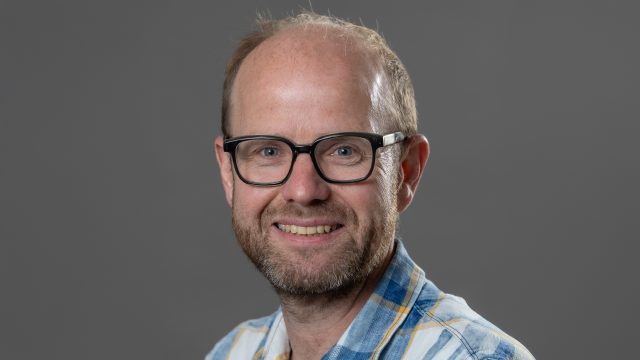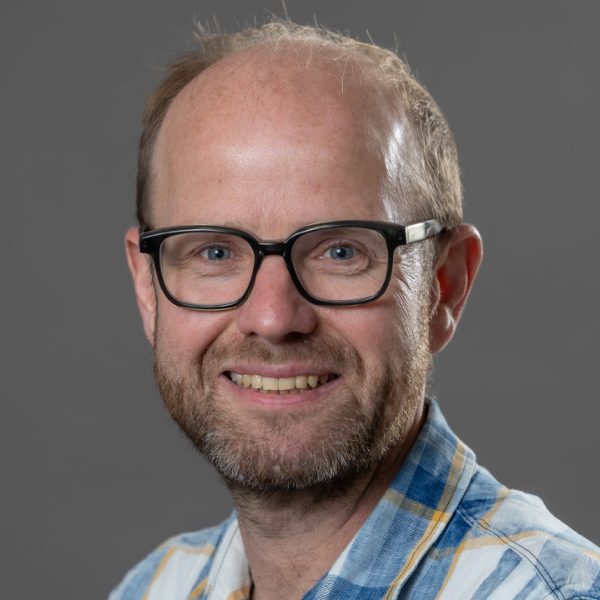
Our Focus
The goal of my lab is to mechanistically dissect the DNA damage response (DDR), as defects in this pathway are commonly observed in cancer, which can be exploited as Achilles heels in anti-cancer treatments. The central theme of my lab is how cells cope with the severe consequences of transcription-blocking DNA lesions (TBLs). Correct regulation of gene expression is crucial for proper cell function and tissue homeostasis. However, the DNA template transcribed by RNA polymerase II (Pol II) is compromised on a daily basis by numerous types of DNA damaging agents either from environmental (e.g. UV induced-damage, chemicals in food or chemotherapy) or endogenous (reactive oxygen species, aldehydes) origin. If these different TBLs are not resolved properly, prolonged stalling of Pol II can lead to severely disrupted cell function due to the absence of newly synthesized RNA molecules or to the appearance of mutant RNA molecules. In addition, prolonged damage-stalled Pol II induces R-loops and may result in collisions with advancing replication forks resulting in genome instability. We focus on how TBLs are repaired by Transcription-Coupled Repair (TCR) and what their effects are on transcription, genome instability and the related DNA damage response, and test whether inhibition of this pathway can be used to make cancer therapies more effective. Furthermore, we study the effects of chemotherapy-induced DNA damage on transcription and its link with neurotoxicity, an important side-effect of chemotherapy.
About Jurgen Marteijn

Jurgen Marteijn
My Research
Jurgen Marteijn started his career as a PhD student in the Central Hematology Laboratory at the Radboud University Medical Center, Nijmegen where he studied the role of the ubiquitin proteasome pathway during haematopoiesis. In 2006 he became a postdoc in the department of Genetics, were he subsequently started his independent research line to study the role of the post-translation modification ubiquitin during DNA-repair and DNA damage-associated signaling (Marteijn, JCB,2009 and van Cuijk, Nat.Com,2015). Using a quantitative proteomics approach to identify DNA damage induced ubiquitylation events, his research group identified UVSSA. This novel identified Transcription-Coupled Repair factor (TCR) is mutated in the UV-sensitive syndrome (Schwertman, Nat.Gen, 2012).
This finding enabled his lab to further dissect the regulation and molecular mechanism of TCR and to understand the severe clinical consequences associated with inherited TCR-defects. Using a combination of live-cell imaging and quantitative proteomics, his research group showed that chromatin remodeling is an essential process during the restart of transcription upon removal of transcription blocking lesions by TCR (Dinant, Mol.Cel, 2013). Furhtermore, his team revealed that the spliceosome is a key target of the DDR and defines a R-loop-dependent, non-canonical ATM activation by transcription-blocking lesions as an important event in the DNA damage response upon transcriptional stress (Tresini, Nature,2015).
Awards
2020:Ammodo Science Award for groundbreaking team research in the life sciences
2018: VICI Grant of Netherlands Organisation for Scientific Research
2014: VIDI Grant of Netherlands Organisation for Scientific Research
2011: Erasmus MC Fellowship
2008: Veni Grant of Netherlands Organisation for Scientific Research
Key Publications
1. DNA damage-induced transcription stress triggers the genome-wide degradation of promoter-bound Pol II
Barbara Steurer, Roel C Janssens, Marit E Geijer, Fernando Aprile-Garcia, Bart Geverts , Arjan F Theil, Barbara Hummel, Martin E van Royen, Bastiaan Evers, René Bernards, Adriaan B Houtsmuller, Ritwick Sawarkar, Marteijn JA
Nature Communications, 2022 Jun 24
2. Active DNA damage eviction by HLTF stimulates nucleotide excision repair
Marvin van Toorn, Yasemin Turkyilmaz, Sueji Han, Di Zhou, Hyun-Suk Kim, Irene Salas-Armenteros, Mihyun Kim, Masaki Akita, Franziska Wienholz, Anja Raams, Eunjin Ryu, Sukhyun Kang, Arjan F Theil, Karel Bezstarosti, Maria Tresini, Giuseppina Giglia-Mari, Jeroen A Demmers , Orlando D Schärer, Jun-Hyuk Choi, Wim Vermeulen, Marteijn JA
Molecular Cell, 2022 April 7
3. Elongation factor ELOF1 drives transcription-coupled repair and prevents genome instability
Geijer ME, Zhou D, Selvam K, Steurer B, …, Bernards R, Svejstrup JQ, Chaudhuri AR, Wyrick J, Marteijn JA
Nature Cell Biology, 2021 Jun 23
4. The DNA damage response to transcription stress.
Lans H, Hoeijmakers JHJ, Vermeulen W, Marteijn JA
Nature Reviews Molecular & Cellular Biology,2019 Dec 20
5. Live-cell analysis of endogenous GFP-RPB1 uncovers rapid turnover of initiating and promoter-paused RNA Polymerase II
Steurer B, Janssens R, Geverts B, Geijer M, Wienholz F, Theil A, Chang J, Dealy S, Pothof J, van Cappellen W, Houtsmuller A, Marteijn JA.
PNAS March 12, 2018
Highlighted with commentary in PNAS, “Transient pausing by RNA polymerase II” (2018)
6. SUMO and ubiquitin-dependent XPC exchange drives nucleotide excision repair.
van Cuijk L, van Belle GJ, Turkyilmaz Y, Poulsen SL, Janssens RC, Theil AF, Sabatella M, Lans H, Mailand N, Houtsmuller AB, Vermeulen W, Marteijn JA.
Nature Communications. 2015 Jul 7;6:7499.
7. The core spliceosome as target and effector of non-canonical ATM signalling.Tresini M, Warmerdam DO, Kolovos P, Snijder L, Vrouwe MG, Demmers JA, van IJcken WF, Grosveld FG, Medema RH, Hoeijmakers JH, Mullenders LH, Vermeulen W, Marteijn JA.
Nature. 2015 Jul 2;523(7558):53-8.
8. Understanding nucleotide excision repair and its roles in cancer and ageing.
Marteijn JA, Lans H, Vermeulen W, Hoeijmakers JH.
Nature Reviews Molecular Cell Biology. 2014 Jul;15(7):465-81.
9. Enhanced chromatin dynamics by FACT promotes transcriptional restart after UV-induced DNA damage.
Dinant C, Ampatziadis-Michailidis G, Lans H, Tresini M, Lagarou A, Grosbart M, Theil AF, van Cappellen WA, Kimura H, Bartek J, Fousteri M, Houtsmuller AB, Vermeulen W, Marteijn JA.
Molecular Cell. 2013 Aug 22.
10. UV-sensitive syndrome protein UVSSA recruits USP7 to regulate transcription-coupled repair.
Schwertman P, Lagarou A, Dekkers DH, Raams A, van der Hoek AC, Laffeber C, Hoeijmakers JH, Demmers JA, Fousteri M, Vermeulen W, Marteijn JA.
Nat Genetics 2012 May
Full publication list can be found on: www.researcherid.com/rid/B-5696-2014.
Members
| Jurgen Marteijn Group leader | Anisha Ramadhin Phd student | Camila Gonzalo Hansen Phd student |
| Cindy Blom PhD student | Daria Repkina Phd student | Georgia Avramidou PhD student |
| Marjolein van Sluis Postdoctoral Researcher | Qing Yu Phd student | Roel Janssens Technician |